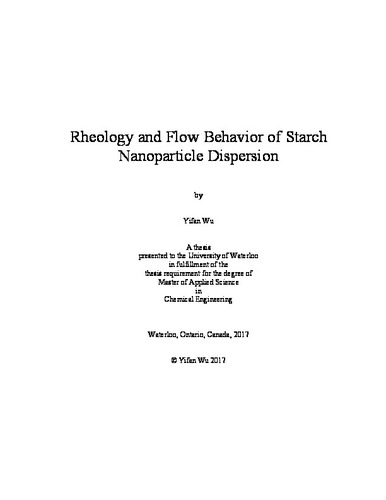| dc.description.abstract | With the extensive awareness of environment friendly around the world, more and more researchers are currently developing and modifying bio-based materials that have various potential applications in different fields, such as packaging, paper coating, pharmaceutical industry and so on. Ecological concerns are the main reasons behind this renewed interest in natural and compostable materials. Starch nanoparticles are one of the most potential material not only because they are renewable, biocompatible, and biodegradable with the perspective of sustainable development, but also because of their unique properties at the nanoscale. However, few scholars systematically examined the basic physical properties, rheology and flow behavior of starch nanoparticles, which inspires us to explore this topic.
In order to gain the general knowledge of starch, the structure of starch, category of starch nanoparticles and application of starch nanoparticles were presented in the background chapter. Then the experimental work was mainly consisted of two sections: bench-scale experiments and pilot-scale experiments. The properties of starch nanoparticles, such as swelling property, aging effect, surface tension, conductivity and shear viscosity, were measured in bench-scale experiments, and the pipe behavior of starch nanoparticles dispersion was analyzed in pilot-scale experiments.
To summarize the results, it is found that the size distribution of starch nanoparticles dispersion shifts toward larger number with increasing the mass fraction. Moreover, the shelf life of prepared starch nanoparticles dispersion is relatively long due to there is no aging effect on the size distribution of dilute dispersion and shear rate of concentrated dispersion. The pH and salt concentration do not affect the swelling property, but the starch nanoparticles disperse faster at high pH situation. In addition, the viscosity of starch suspension decreases with increasing the temperature and increases with increasing the concentration. In the case of surface tension and conductivity, it is observed that the starch nanoparticles can lower the surface tension between water and gas and have a very weak effect on the conductivity. Finally, the pumping behavior of starch nanoparticles dispersion is not significantly different from water, in other word, there is no drag reduction effect of starch nanoparticles. | en |

